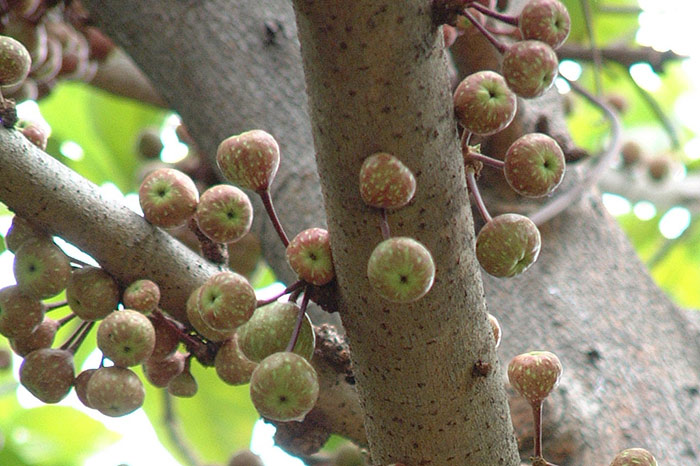Ficus variegata
The Konishi fig is tall and straight, a plant with a unique appearance and ecological value. Typically there are well-developed buttress roots at the base of this large tree, which provide stable support for the entire plant in environments with abundant rainfall, demonstrating its strong vitality.
The most distinctive feature of the Konishi fig lies in the growth pattern of its synconia. Unlike most Ficus plants, the synconia of the Konishi fig do not grow on small branches but directly on the main trunk or thick branches. This unique phenomenon, known as “cauliflory”, is one of the characteristics of tropical rain forest plants, making the Konishi fig stand out among other plants.
The mature synconia of the Konishi fig are typically large in size, vibrant in color, and resemble apples in shape, with a distinct long stem. In nature, they are often consumed by wild animals such as squirrels. The development process of the synconia is closely intertwined with the life cycle of specific insects, forming a diverse ecological system. This mutually beneficial relationship between plants and animals vividly demonstrates the close connections within the ecological community of nature. Additionally, synconia not only provide wild animals with a rich source of food and nutrients, but the animals' consumption also facilitates the dispersal and reproduction of seeds of the Konishi fig.
The Konishi fig is commonly found in tropical and subtropical forests, primarily distributed in tropical Asia, southern China, and the Ryukyu Islands. In Taiwan, it is mainly distributed in low-altitude areas across the island and on the foothills of mountains in Orchid Island. The museum has planted it in the Monsoon Rainforest Area of the Botanical Garden, where robust plants with well-developed buttress roots can currently be observed.
